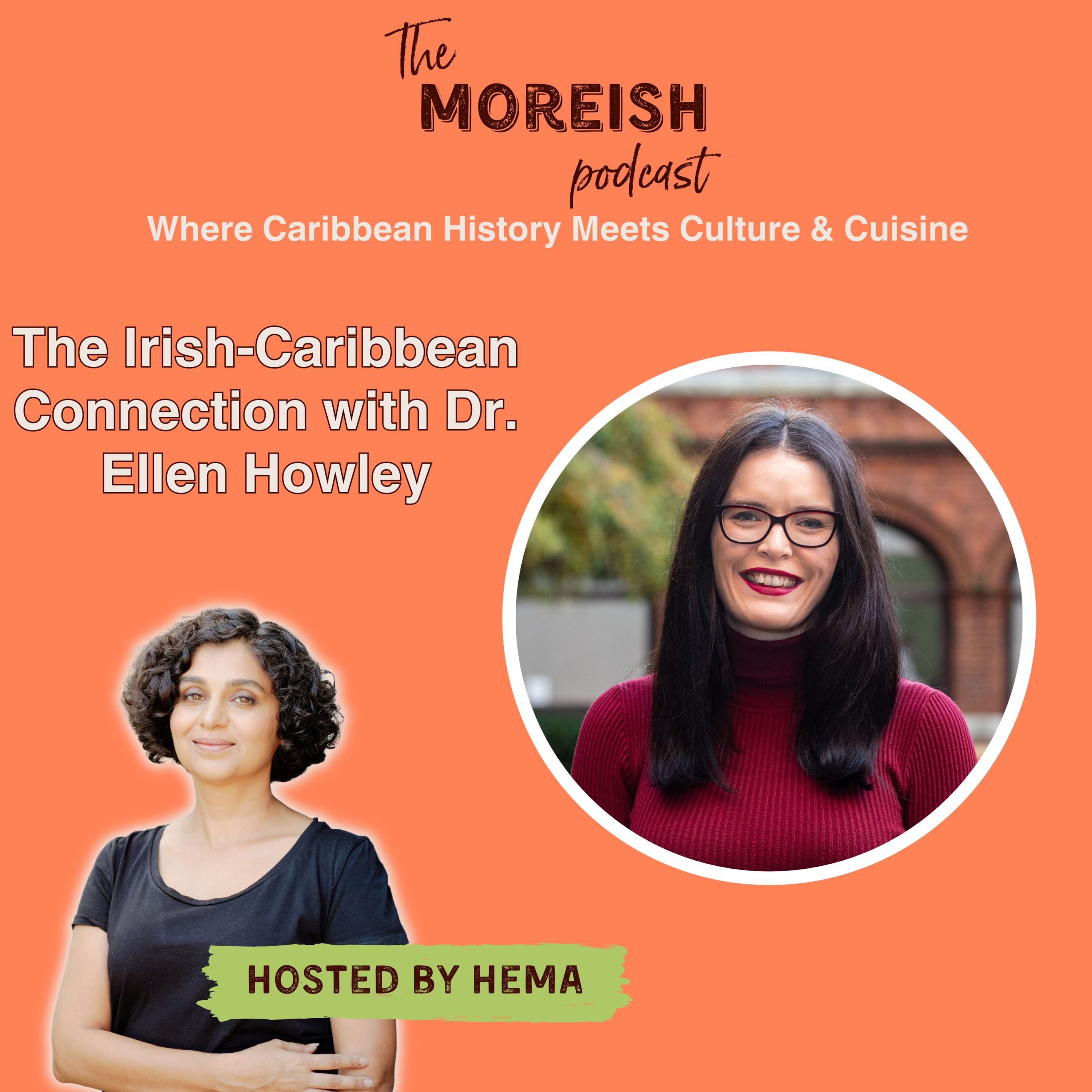365 Beaches and Beyond: Antigua & Barbuda’s Culinary Heritage
Known as the land of 365 beaches, Antigua & Barbuda is a twin-island in the Caribbean often looked at as a vacation spot. It offers a rich tapestry of history, culture and food that many tourists miss.
Listen to the episode
More than just a sun-soaked vacation destination, Antigua & Barbuda in the Caribbean is a nation rich with cultural heritage, deep-rooted history, and culinary traditions that reflect centuries of resilience and adaptation. In this episode of The Moreish Podcast, co-hosts Hema and Mireille explore the twin-island nation’s journey from its Indigenous origins to its present-day identity, delving into its African roots and British colonial past, and how all of this shows up in the cuisine.
A brief history of Antigua & Barbuda
Call it Antigua or Antigua & Barbuda, this Caribbean nation is often dubbed the land of 365 beaches – one for each day of the year. Antigua is often front and centre, but let’s not forget Barbuda!
It’s more than a sun-filled vacation spot. With about 95,000 residents, this twin-island state is home to many people with rich and layered stories, historical influences, and national pride.
It is believed that the first inhabitants of Antigua & Barbuda were the Indigenous Siboney people, and the first well documented people were the Arawaks and Caribs, who may have arrived from Venezula.
Colonial history tells a tale of British settlers starting around 1632, briefly interrupted by the French in 1666. Colonization and the establishment of sugar plantations in the 1600s forever altered the demographic fabric of Antigua, with approximately 140,000* enslaved Africans forcibly taken to the the islands to work on the plantations. The influence of the people during this time can be seen in the current language, culture, and cuisine.
Population and Cultural Influences
Today’s population reflects a mix of African ancestry, British colonial influences, and smaller pockets of Hispanic residents. Knowing where the people came from helps us appreciate and understand the rich culture and resilient history.
A Culinary Exploration of Antigua & Barbuda
The National Dish: Fungi and Pepperpot
The national dish of Antigua & Barbuda is Fungi (fungee) and Pepperpot, which embodies the islands’ African roots and colonial history.
Fungi, which you’ll also find called Funchi, Turn Cornmeal, or Cuckoo in other Caribbean islands, is a cornmeal-based savoury porridge made with cornmeal, okra, and water that is reminiscent of African fufu. Commonly enjoyed with various stews, in the national dish it’s served with Pepperpot.
Pepperpot in Antigua has the same name but is different than its Guyanese counterpart. In Antigua it’s more of a vegetable-rich dish with ingredients like spinach, okra, eggplant, green squash, and pumpkin, along with any available meat, often salted pork or beef which can be traced back to its colonial era origins. It’s a humble yet deeply satisfying dish born of necessity.
In present day you can see how the history of the country and the people who arrived – from the British to the enslaved African people – have shaped the culture and culinary landscape of Antigua &Barbuda.
Sources and Resources
- Slave Voyages
- Visit Antigua and Barbuda
- Britannica: History of Antigua and Barbuda
- The World Factbook: Antigua and Barbuda
- Antigua History
- New World Encyclopedia






